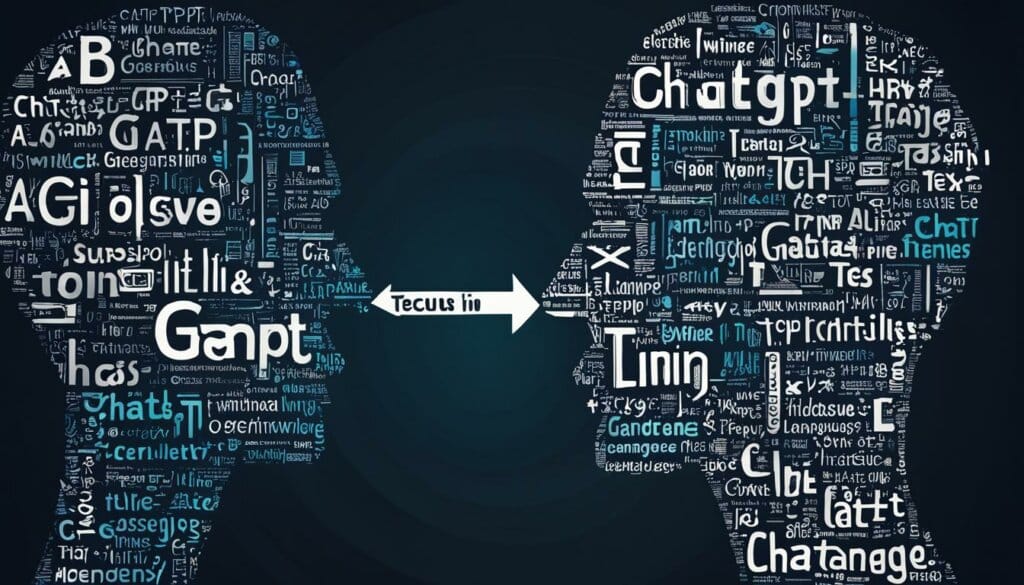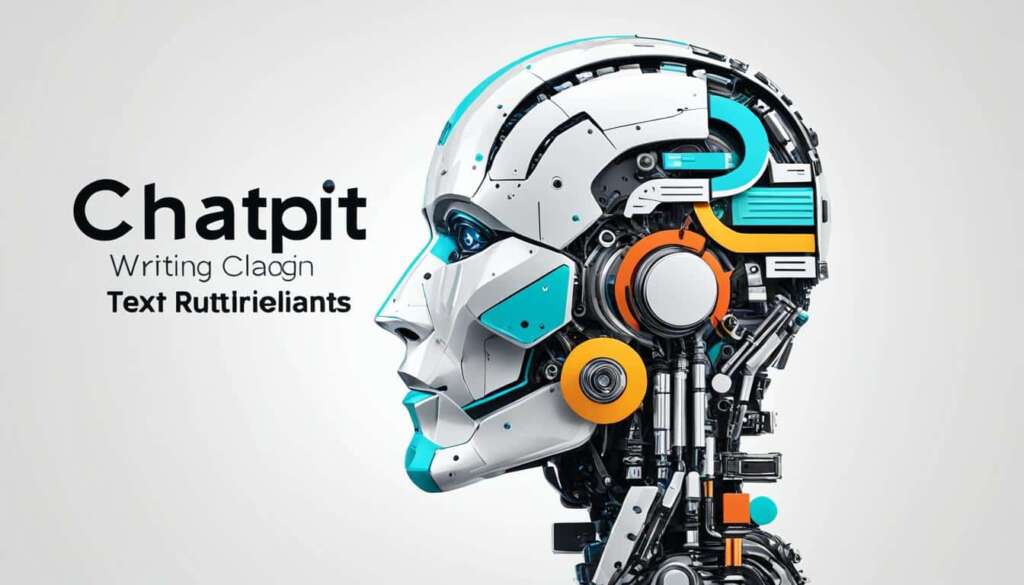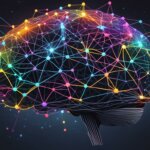Table of Contents
As artificial intelligence (AI) continues to advance, it has become increasingly important to be able to distinguish between human-written content and content generated by models like ChatGPT. In this article, we will discuss key hints to help you identify if something was written by ChatGPT, enabling you to distinguish and identify ChatGPT-generated text with ease.
When it comes to recognizing ChatGPT-authored content, there are several factors to consider. By understanding these hints, you can confidently differentiate between human and ChatGPT-generated content.
The Use of AI Detectors in Identifying ChatGPT Texts
AI detectors play a crucial role in recognizing chatGPT authored articles and differentiating chatGPT written content from human-written material. These tools are designed to analyze text and provide indications of whether it is likely AI-generated or created by a human. They have been widely used by educators, marketers, and other professionals to detect chatGPT authored content and ensure the authenticity of written materials.
AI detectors employ various algorithms and techniques to determine the origin of a text. They examine language patterns, grammar usage, and contextual cues to identify chatGPT generated content. By analyzing these factors, these detectors can provide valuable insights into the authenticity of a piece of writing.
However, it is important to note that AI detectors are not infallible. They have certain limitations and may not always accurately differentiate between chatGPT authored content and human-written text. The rapidly evolving nature of AI technology presents challenges in consistently detecting chatGPT generated articles.
“AI detectors are invaluable tools in the identification of chatGPT texts, but they are not foolproof. Contextual analysis and expert human judgment are essential for accurate determination.”
Despite their limitations, AI detectors have proven to be highly useful in the detection process. Their insights can guide further examination and analysis of a text, allowing users to make informed decisions regarding its authenticity. These tools offer a valuable starting point in the investigation of chatGPT authored articles and provide a foundation for deeper scrutiny.
Recognizing the Limitations of AI Detectors
While AI detectors can provide indications of chatGPT authored content, it is crucial to recognize their shortcomings. Some challenges associated with AI detectors include:
- The evolving nature of AI technology may outpace the detectors’ ability to keep up with advanced language models.
- The detectors may struggle to differentiate between content generated by highly advanced language models and human-written articles that mimic AI-style writing.
- ChatGPT may constantly adapt its writing style, making it more difficult for detectors to accurately identify its texts.
- AI detectors may yield false positives or false negatives, resulting in erroneous categorization of content.
Considering these limitations, it is essential to combine AI detection tools with human expertise to achieve accurate and reliable results. Human judgment and critical analysis are critical in distinguishing between human and chatGPT written material.
| AI Detector | Features | Limitations |
|---|---|---|
| AI Text Classifier | Uses machine learning algorithms to classify text as AI-generated or human-written | May not accurately distinguish between advanced AI models and human-like writing |
| GPTZero | Specifically designed to detect chatGPT generated content | Relies on regular updates to keep up with evolving chatGPT models |
| Originality.AI | Analyzes text for uniqueness and detects AI-generated content | May not detect texts that are heavily edited or rephrased from AI-generated sources |
| Writer AI Content Detector | Identifies AI-generated content by analyzing sentence structure and language patterns | Accuracy may vary depending on the complexity of the AI model used |
| ZeroGPT | Specifically developed to detect chatGPT texts | Requires regular updates to stay effective against evolving AI models |
Popular AI Detectors for ChatGPT Texts
When it comes to spotting ChatGPT-generated text, there are several popular AI detectors available that can help determine if a piece of content is from ChatGPT. These detectors include:
- AI Text Classifier: This detector uses advanced algorithms to analyze text and identify patterns commonly associated with ChatGPT-generated content. It provides valuable insights into the likelihood of AI involvement.
- GPTZero: GPTZero is another powerful AI detector that can recognize the distinct characteristics of ChatGPT-authored articles. Its sophisticated technology assists in distinguishing between human-written and AI-generated material.
- Originality.AI: Developed specifically for content creators and marketers, Originality.AI helps determine the originality and authenticity of written content. It offers a unique perspective on whether a text is likely to be ChatGPT-generated.
- Writer AI Content Detector: This AI detector specializes in identifying ChatGPT-authored content by analyzing key linguistic features and comparing them to known ChatGPT patterns. It aids in differentiating between human and AI writing styles.
- ZeroGPT: ZeroGPT is a comprehensive AI detector that utilizes advanced machine learning techniques to detect ChatGPT-generated content. It considers a wide range of factors, including syntax, vocabulary, and semantic structures.
Each of these AI detectors has its own methodology and limitations. While they can provide valuable insights into whether a text is likely AI-generated, it is important to use them as tools for conversation and not as definitive proof of AI involvement.
Remember, the detection of ChatGPT texts is an evolving field, and new AI detectors may emerge in the future. It is essential to stay updated with the latest developments to effectively differentiate between human and ChatGPT-generated content.
Analyzing Writing Style and Tone to Detect ChatGPT Texts
One way to distinguish between human-written content and content generated by ChatGPT is by analyzing the writing style and tone. ChatGPT tends to exhibit certain patterns and characteristics that can be identified through careful examination. These indicators include:
- Overly complex sentence structures, with convoluted grammar and syntax
- Formal language, characterized by the use of elaborate vocabulary and technical terms
- Repetitive phrases and sentences, often used as fillers or to extend the length of the text
- A lack of personal touch or emotional nuances, resulting in a detached and impersonal tone
By paying close attention to these indicators, it becomes possible to differentiate between human and ChatGPT writing. Human-authored content tends to have a more natural flow, with simpler sentence structures and a personal touch that reflects the author’s individual style and perspective.

Understanding the nuances of writing style and tone is crucial in detecting ChatGPT texts. By leveraging our human intuition and linguistic expertise, we can identify the unique characteristics of AI-generated content and make informed judgments. However, it is important to note that the presence of these indicators alone may not be definitive proof of ChatGPT involvement. It is advisable to use a combination of detection methods and tools to enhance accuracy and ensure reliable results.
The Length and Coherence of ChatGPT Texts
When attempting to determine if a text has been authored by ChatGPT, examining the length and coherence can provide valuable insights. ChatGPT-generated texts often display a characteristic tendency towards excessive length and wordiness. These lengthy passages may lack coherence and contain repetitive or nonsensical information.
By carefully analyzing the overall structure and flow of a text, it becomes easier to distinguish between human-written content and content generated by ChatGPT. The presence of lengthy and incoherent passages can serve as strong indicators that the text may indeed be AI-generated.
“Many ChatGPT-generated texts tend to suffer from a lack of conciseness and clarity, often resulting in convoluted sentences and extended paragraphs filled with redundant information. This verbosity and lack of coherence can be a telltale sign of AI involvement.”
Identifying these characteristics requires a close examination of the text. By scrutinizing the length and coherence of individual sentences, as well as the overall structure and logical flow of the piece, one can gain valuable insights into the nature of its authorship.
Detecting Repetitiveness and Nonsensical Information
Another important aspect to consider when evaluating the coherence of ChatGPT texts is the presence of repetitive or nonsensical information. AI-generated texts may feature redundant phrases or sentences, often repeating the same idea multiple times. This pattern of repetition can be a clear indication of content produced by ChatGPT.
Furthermore, ChatGPT-generated texts may occasionally lack logical coherence, with paragraphs or sections that fail to connect or make sense within the context of the overall content. These inconsistencies can be identified by closely examining the logical progression and coherence of the ideas presented in the text.
By effectively assessing the length, coherence, and logical flow of a text, one can determine if it was likely generated by ChatGPT. These characteristics, when carefully analyzed, serve as strong indicators of AI involvement in the writing process.
Future Challenges and Solutions in Detecting ChatGPT Texts
As AI technology continues to advance, the challenges in identifying artificial intelligence generated writing are expected to become more complex. AI models, including ChatGPT, are constantly improving, making it increasingly difficult to distinguish between AI-generated and human-written content. This poses significant challenges for individuals and organizations relying on accurate and authentic information.
To address these challenges, researchers and developers are exploring potential solutions to enhance the detection of AI-generated texts. One approach being considered is the incorporation of watermarks or signals within AI-generated content. These subtle markers, hidden within the text, could be used as indicators of AI involvement without compromising the readability or user experience.
By strategically embedding these identifying features, content creators and readers may gain insights into the origin of the text, helping them differentiate between human and AI-generated writing. Watermarks and signals have the potential to enhance the accuracy of AI detectors and provide a valuable tool in the battle against AI-generated misinformation.
“The development of watermarking techniques for AI-generated content holds promise in addressing the ongoing challenge of identifying artificially generated texts. These techniques have the potential to empower users and ensure that the authenticity and integrity of information are preserved.”
Additionally, advancements in natural language processing and machine learning algorithms are aimed at improving the accuracy of AI detection tools. As researchers continue to refine and train models to recognize the subtle nuances between human and AI-generated writing, these detection systems are expected to become more effective and reliable.
Examples of Watermarking Techniques:
| Watermark Technique | Description |
|---|---|
| Steganography | Hidden information is embedded in the text using imperceptible modifications to the structure or formatting. |
| Lexical Analysis | Specific patterns or sequences of words are strategically inserted to provide an identifiable signature. |
| Contextual Markers | Fragments of text, unique phrases, or syntactic structures are incorporated to serve as distinct markers. |
These watermarking techniques, coupled with the continuous development of AI detection methods, offer hope for more accurate identification of artificially generated texts. However, it is important to note that as AI technology progresses, so will the sophistication of AI models, posing new challenges in the detection process. Ongoing collaboration between researchers, developers, and industry professionals is vital to staying one step ahead of AI-generated content and mitigating potential risks associated with AI misinformation.
The Role of Humans in Detecting ChatGPT Texts
Despite the development of AI detectors and other tools, human intuition and judgment still play a crucial role in differentiating between chatGPT generated content and human-written text. Humans possess an innate ability to identify patterns and inconsistencies that even the most advanced AI models may overlook or misinterpret. While AI detectors can provide valuable insights, it is important to rely on human expertise to make accurate determinations.
“Human intuition and judgment play a vital role in distinguishing between chatGPT generated content and human-written text.”
By leveraging their deep understanding of language, context, and cultural nuances, humans can spot subtle nuances and context-specific elements that AI detectors may struggle to comprehend. Detecting chatGPT texts requires a level of critical thinking and contextual understanding that only human beings possess.
Let’s take a closer look at the various reasons why human involvement is essential in differentiating chatGPT-generated content from human writing:
Analyzing Complex Contexts
AI detectors often rely on predefined patterns and rules to identify AI-generated content. While these detectors are valuable tools, they operate within certain limitations. In complex contexts, such as technical or industry-specific content, detecting chatGPT texts can be challenging for AI detectors. Humans, on the other hand, can utilize their domain expertise and contextual understanding to navigate such complexities and accurately determine the origin of the text.
Interpreting Subtle Nuances
Language is rich with nuance, idiomatic expressions, and cultural references that make each piece of writing unique. ChatGPT models may struggle to grasp these subtleties, resulting in texts that lack the natural flow and authenticity of human writing. Humans, with their innate linguistic abilities, can pick up on these nuances and inconsistencies, providing valuable insights into distinguishing chatGPT-generated content from human writing.
Evaluating Emotional Intelligence
Emotional intelligence is a fundamental aspect of human communication. Detecting chatGPT texts often requires an understanding of the emotional depth and tone behind the words. While AI detectors can identify certain patterns, they might struggle to accurately gauge the intended emotions or identify the subtle shifts in tone that human-written texts possess. Humans excel in interpreting emotions, sarcasm, and the overall sentiment behind the text, enabling them to distinguish between chatGPT-generated content and human writing.
Combining the capabilities of AI detectors with human expertise and intuition can result in more accurate determinations when identifying chatGPT texts. By leveraging the strengths of both AI and human analysis, we can enhance the effectiveness of text detection methodologies in an increasingly AI-driven world.
| Role of Humans | Role of AI Detectors |
|---|---|
| Identify subtle nuances and context-specific elements | Recognize predefined patterns and rules |
| Analyze complex contexts, such as technical or industry-specific content | Operate within predefined limitations |
| Evaluate emotional intelligence and interpret sentiments | Identify basic emotional patterns but struggle with subtle shifts in tone |
While AI detectors offer valuable insights into detecting chatGPT texts, it is crucial to understand their limitations and utilize human expertise to make accurate determinations. Humans possess a unique combination of cognitive abilities and emotional intelligence that complements the capabilities of AI systems. By leveraging both human and AI analysis, we can improve our ability to differentiate chatGPT-generated content from human writing.
Conclusion
Detecting whether something was written by ChatGPT can be a challenging task, but it is not impossible. By utilizing AI detectors, analyzing writing style and tone, considering the length and coherence of the text, and relying on human intuition, it is possible to detect chatGPT-authored content and distinguish chatGPT-generated text.
AI detectors have been developed to help identify content generated by ChatGPT. These tools can analyze text and provide indications of whether it is likely AI-generated or human-written. However, it is important to note that these detectors may not always be accurate, and there are limitations to their effectiveness.
One effective approach is analyzing the writing style and tone. ChatGPT tends to have certain patterns and characteristics, such as overly complex sentence structures, formal language, repetitive phrases, and a lack of personal touch. By paying attention to these indicators, it becomes easier to differentiate between human and ChatGPT writing.
Additionally, considering the length and coherence of the text can be helpful. ChatGPT-generated texts often exhibit excessive length, wordiness, lack of coherence, and contain repetitive or nonsensical information. By analyzing the overall structure and flow of the text, one can identify chatGPT authored content more effectively.
As AI technology continues to evolve, it is essential to stay vigilant and adapt detection methods to keep up with the changing landscape of AI-generated writing. While AI detectors can provide valuable insights, human intuition and judgment still play a crucial role in distinguishing chatGPT generated text. So, combining the power of AI detectors with human expertise can lead to more accurate determinations and ensure the authenticity of written content.
FAQ
How can I distinguish if something was written by ChatGPT?
There are several key hints that can help you identify if something was written by ChatGPT. These include analyzing the writing style and tone, considering the length and coherence of the text, and utilizing AI detectors.
What are AI detectors and how can they be used to identify ChatGPT texts?
AI detectors are tools that can analyze text and provide indications of whether it is likely AI-generated or human-written. They can be used by educators, marketers, and other professionals to ensure the authenticity of written content. However, their accuracy and effectiveness may vary.
Which popular AI detectors can be used to identify ChatGPT-generated texts?
Some popular AI detectors for identifying ChatGPT-generated texts include AI Text Classifier, GPTZero, Originality.AI, Writer AI Content Detector, and ZeroGPT. Each detector has its own methodology and limitations.
How can analyzing writing style and tone help in detecting ChatGPT texts?
ChatGPT tends to have patterns and characteristics in its writing style, such as overly complex sentence structures, formal language, repetitive phrases, and a lack of personal touch. By paying attention to these indicators, you can differentiate between human and ChatGPT writing.
What should I look for in terms of the length and coherence of the text to detect ChatGPT-generated content?
ChatGPT-generated texts often exhibit excessive length and wordiness. They may also lack coherence and contain repetitive or nonsensical information. By analyzing the overall structure and flow of the text, it becomes easier to spot text that is likely AI-generated.
Are there any future challenges and solutions in detecting ChatGPT texts?
As AI technology continues to advance, it may become more challenging to detect ChatGPT texts. However, researchers are exploring potential solutions, such as incorporating watermarks or signals within AI-generated texts to help identify AI involvement without compromising readability.
What is the role of humans in detecting ChatGPT texts?
While AI detectors can provide valuable insights, human intuition and judgment still play a crucial role in detecting ChatGPT texts. Humans have an innate ability to identify patterns and inconsistencies that even the most advanced AI models may miss.
In conclusion, can ChatGPT-generated content be detected?
Yes, by utilizing AI detectors, analyzing writing style and tone, considering the length and coherence of the text, and relying on human intuition, it is possible to distinguish between human and ChatGPT-generated content.













